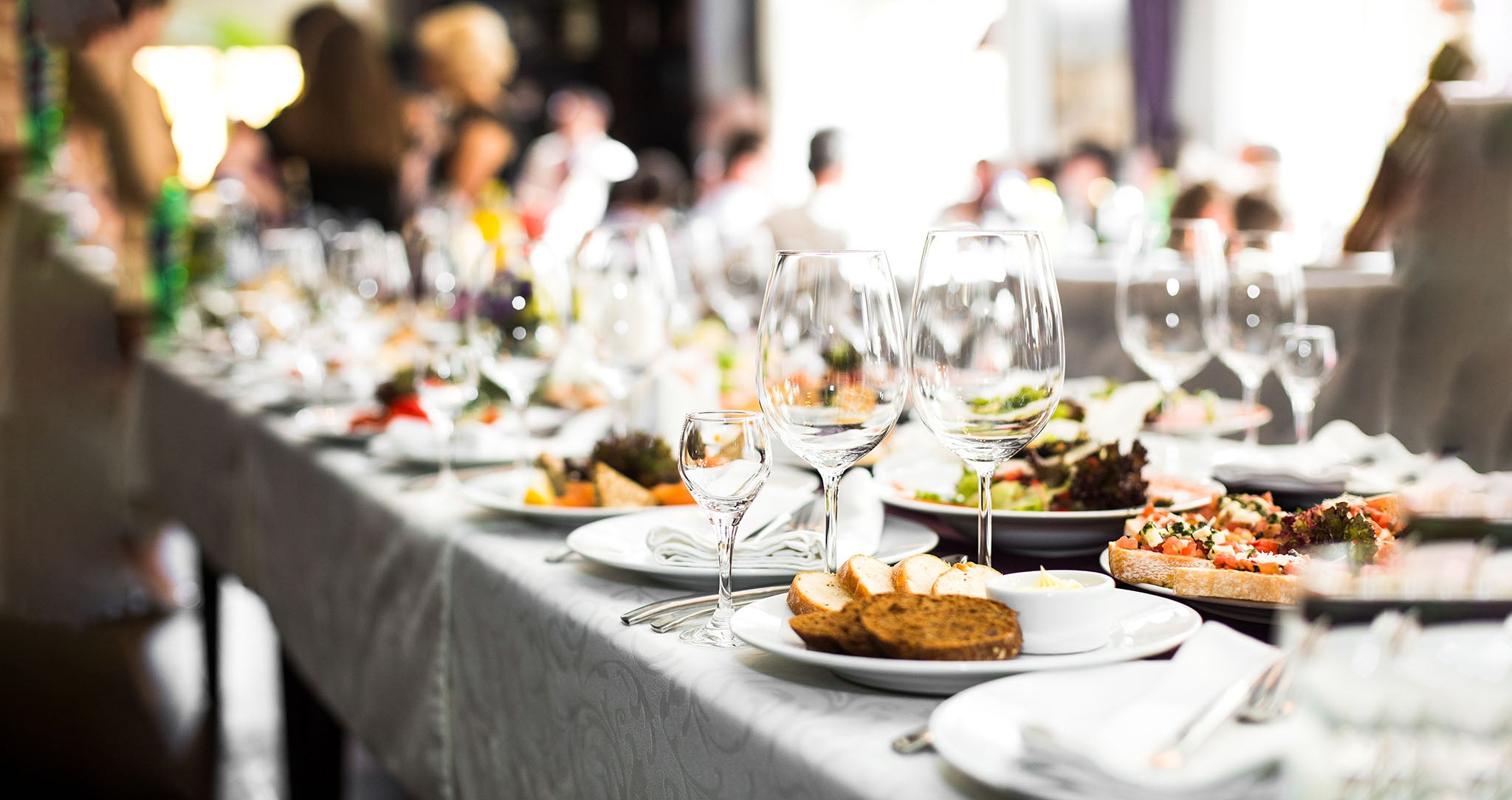
Event Catering Health and Safety Templates & Guidance
Pre-filled, editable health and safety templates for event caterers, wedding catering professionals, corporate catering teams, festival caterers, and pop-up kitchen operators — including risk assessments, policies, and more to keep your business safe, professional, and compliant.
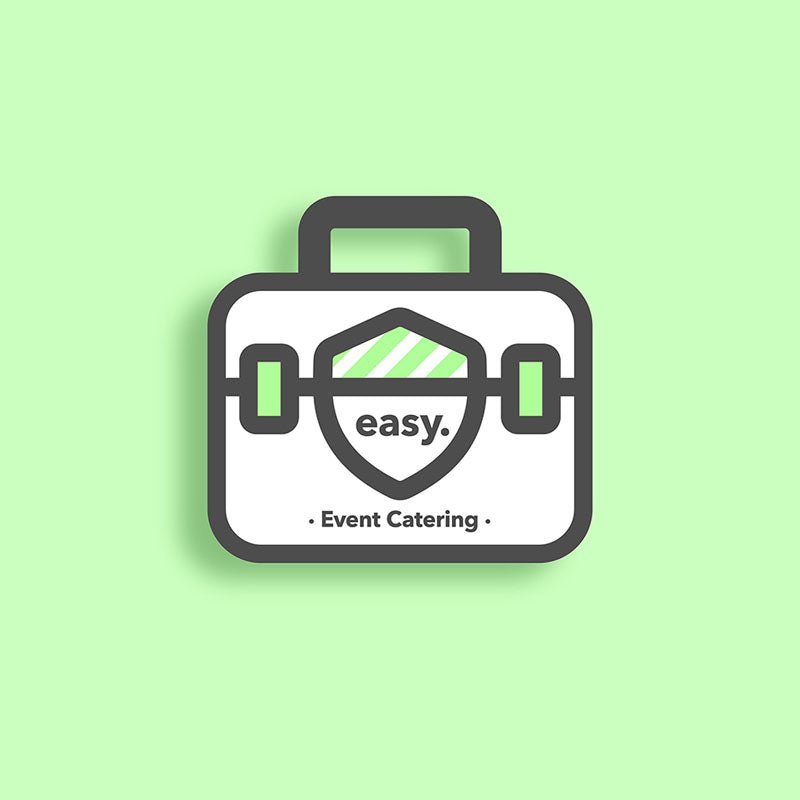
Take charge of health and safety across your event catering business with our easy-to-use templates.
Simplify health and safety management in your event catering business, whether you’re delivering wedding catering, managing corporate events, running a pop-up kitchen at a festival, or overseeing private dining functions. Our editable templates are designed specifically for the catering industry, helping event caterers stay compliant with regulations while protecting staff, guests, and contractors from everyday risks in fast-paced catering environments.
Many templates come pre-filled with detailed, industry-specific content — from event catering risk assessments and health and safety policies to fire safety templates, COSHH documents, accident reports and staff safety guidance — making completion quick, accurate, and stress-free. With our ready-to-use tools, you can focus on managing logistics, serving exceptional food, and delivering memorable events while maintaining the highest standards of safety and compliance.

Beyond the Banquet: Why Health and Safety Matters for Event Caterers
The appeal of event catering lies in creating memorable dining experiences — from elegant wedding banquets and corporate functions to lively festivals and private parties. But behind the beautifully presented plates sits something just as important: a strong approach to health and safety. From protecting your staff to meeting compliance requirements, an event caterer’s dedication to safety is what keeps everything running smoothly.
Staff and Guest Safety
Event catering kitchens and service areas are fast-paced environments filled with hot oil, boiling water, gas cylinders, sharp knives, and electrical equipment. The wellbeing of your catering team is essential not only to prevent accidents but also to build confidence and maintain productivity. At the same time, guest safety must remain a top priority — from keeping service areas clean and allergen information visible, to reducing risks of slips, trips, and even burns. A strong safety culture ensures both staff and guests are protected while creating a positive dining experience.
Meeting Legal Duties with Confidence
Health and safety laws are not optional; they are essential obligations. Non-compliance can result in fines, enforcement action, or even business closure. For event caterers working in marquees, hotels, or pop-up kitchens, tools such as risk assessments, fire safety templates, and health and safety policies are crucial for demonstrating compliance and managing risks effectively. Keeping documentation accurate and up to date not only fulfils legal duties but also provides peace of mind for caterers and event managers alike if the worst does happen.
Protecting Your Reputation
In today’s digital age, one negative incident can harm a catering business overnight. News of poor hygiene, unsafe practices, or guest accidents can spread quickly across social media and review platforms. A strong commitment to health and safety protects your reputation, builds trust with clients, and encourages repeat bookings for weddings, corporate events, and private functions.
Proactive Safety Tools
Effective safety management is about prevention, not just reaction. Relevant staff training, clear signage, and up-to-date risk assessments form the foundations of safe daily operations. Health and safety awareness and a culture of accountability ensure hazards are identified and resolved before they escalate. To make this easier, we’ve developed ready-to-use compliance documents designed specifically for event catering businesses. These tools allow you to maintain the highest standards of safety while focusing on what you do best — delivering unforgettable events and delighting your guests.
Top 3 Health and Safety Hazards for Event Caterers:
-
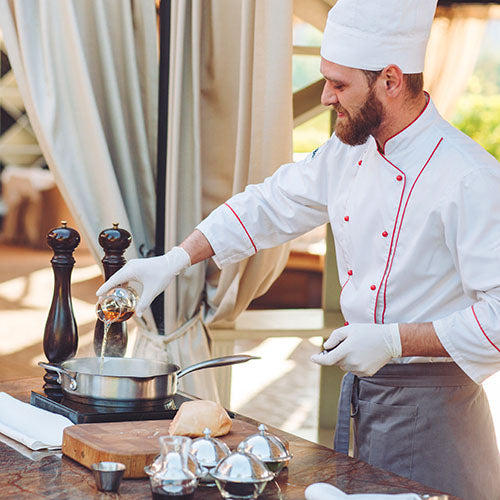
Fire Safety Risks
View ProductsOpen flames, hot oil, gas cylinders, and electrical equipment make fire one of the most serious hazards in catering. A blaze can spread rapidly in marquees, temporary kitchens, or event spaces, putting staff, guests, and property at risk. Mitigation includes carrying out a detailed fire risk assessment, maintaining fire extinguishers and fire blankets, training staff in emergency procedures, and ensuring gas and electrical equipment are correctly set up, regularly checked, and used safely by trained staff.
-
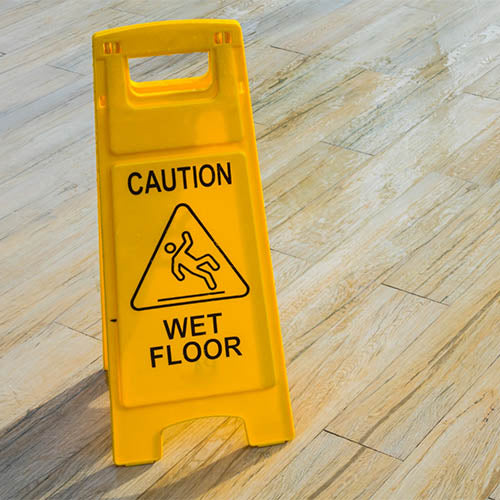
Slips, Trips, and Falls at Events
View ProductsBusy catering environments mean spills, trailing cables, and uneven surfaces are common. Slips, trips, and falls can cause broken bones, sprains, or head injuries for staff and guests alike. A thorough risk assessment should identify potential hazards in advance and ensure that effective controls are in place. Risk reduction measures include keeping walkways clear, cleaning up spills immediately, using non-slip mats in wet areas, and ensuring good lighting. Proper footwear for staff and regular venue checks also play a crucial role.
-
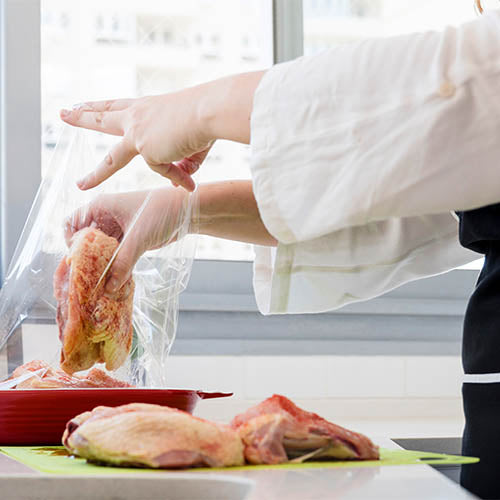
Food Safety and Allergen Control
View ProductsFood poisoning or allergic reactions can cause severe illness to guests and significant reputational damage for caterers. Risks arise from poor temperature control, cross-contamination, or failing to communicate allergen information. Caterers should implement strict food hygiene procedures, use colour-coded utensils, maintain temperature logs, and keep an up-to-date allergen register. Staff training and clear communication with clients and guests are also essential to protect everyone.

Why pay expensive consultant fees when you can manage health and safety yourself?
Ensure compliance while saving time and money by creating health and safety documents, customised to your business, yourself. Our health and safety range for event catering businesses covers a suite of essential templates including health and safety policies, risk assessments, COSHH forms, fire safety documents, health and safety guidance, safety posters and more.
Benefits of managing health and safety yourself...
-

Improve safety
Health and safety at work is about preventing accidents, incidents and ill-health by assessing the work environment, the activities within it, and taking appropriate action.
-

Ensure compliance
Our ready to use templates, many of which are pre-filled, will enable you to quickly increase your compliance to health and safety laws and regulations.
-

Save money
With health and safety consultants often charging upwards of £400 per day, there is a better way. Take control and save yourself time and money.
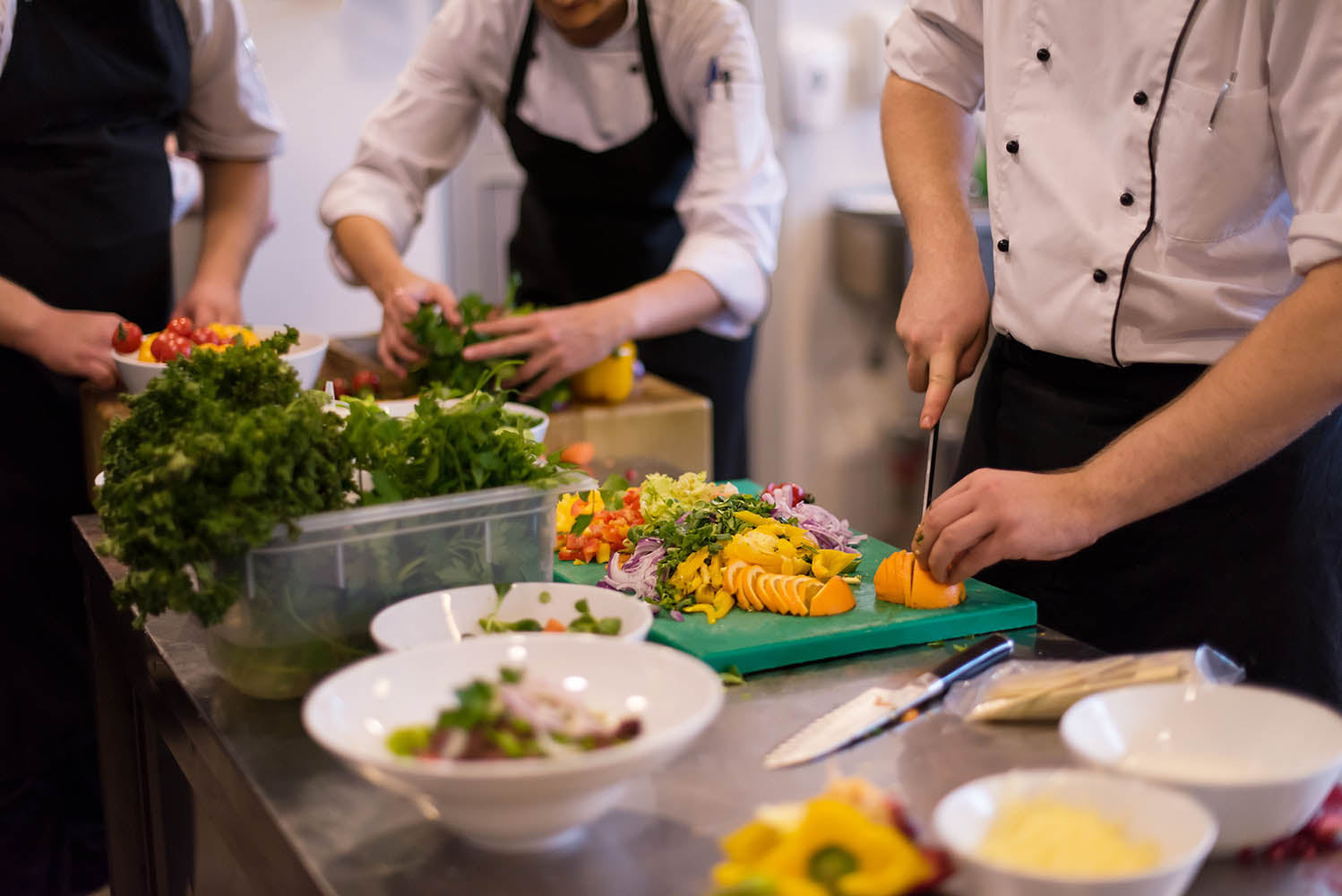
Serving Up Safety: Tackling Compliance Challenges in Event Catering
Running an event catering business — whether it’s delivering wedding catering, managing corporate functions, setting up a marquee kitchen, or serving at festivals — means juggling countless responsibilities at once. From planning menus and managing logistics to preparing food and ensuring staff work safely, the daily pressures can sometimes push health and safety compliance further down the list than it should be.
For many event catering businesses, finding the time and resources to fully implement and maintain safety measures can feel overwhelming. The need to keep events running smoothly and clients satisfied often takes priority, but neglecting compliance can create risks with serious long-term consequences.
At easyhealthandsafety, we take the pressure off event caterers by providing ready-to-use templates and guidance that are practical, affordable, and simple to follow. Our pre-filled risk assessments, policies, and compliance tools help you protect staff, guests, and your business reputation — so you can focus on delivering outstanding events and growing your catering service with confidence.
Frequently Asked Questions
Event Catering Health and Safety FAQs
How can I create a risk assessment for my event catering business?
Every event catering business must carry out a risk assessment to identify hazards, who might be harmed, and how risks can be controlled.
A risk assessment helps you identify potential dangers and take action before incidents occur. This applies to all types of event caterers, some examples being wedding catering professionals, corporate catering teams, festival caterers, and pop-up kitchen operators. For these businesses, typical hazards include fire from cooking equipment, slips and trips in busy service areas, burns from hot food and oil, manual handling during setup, and food hygiene risks. Once hazards are identified, you must put realistic control measures in place and review them regularly, especially when working in new venues or temporary kitchens.
Many event caterers worry about missing key hazards or using the wrong format. Our Event Catering Risk Assessment Template is pre-filled with the most common catering risks and provides a professional structure that can be quickly edited and adapted to your specific events, venues, or team size.
For a complete compliance solution, our Event Catering Health and Safety Template Bundle includes a collection of over 60 essential documents — covering risk assessments, health and safety policies, COSHH forms, fire safety templates, staff safety guidance, and more — giving you confidence that your business is safe, professional, and fully compliant.
Do event catering businesses need to complete a risk assessment?
Yes — all event catering businesses must complete a risk assessment to identify and manage potential hazards that could affect staff, guests, and contractors.
Under the Management of Health and Safety at Work Regulations 1999, every employer has a legal duty to assess the risks associated with their activities. This applies to all types of event caterers, some examples being wedding catering professionals, corporate catering teams, festival caterers, and pop-up kitchen operators — whether working at private functions, outdoor events, or corporate venues.
Our editable Event Catering Risk Assessment Template makes this process simple and efficient, with pre-filled content tailored to the real hazards faced by event catering professionals.
For an all-in-one compliance solution, our Event Catering Health and Safety Template Bundle includes a collection of over 60 essential documents — covering risk assessments, health and safety policies, COSHH forms, fire safety templates, staff safety guidance, and more — giving you confidence that your business is safe, professional, and fully compliant.
If your business employs five or more people, you are legally required to record your risk assessment in writing. However, even smaller catering businesses should complete one as best practice to demonstrate compliance, professionalism, and protect the business. Common risks include fire, slips and trips, manual handling, gas or electrical equipment, and food hygiene.
What should be included in a risk assessment for event catering?
Your risk assessment should be specific to your business, covering all activities and environments where staff and guests may be at risk.
This includes hazards such as fire from gas cylinders or portable cooking equipment, burns from hot oil or ovens, slips and trips during setup or service, musculoskeletal injuries from moving heavy tables or catering kit, and food poisoning from poor temperature control. You must also identify who might be harmed — such as catering staff, agency workers, contractors, or guests — and set out the measures you’ll take to reduce risks. It’s also essential to keep records updated and review them whenever your operations or venues change.
Our editable Event Catering Risk Assessment Template comes pre-filled with industry-relevant content covering these essential areas, ensuring you can demonstrate compliance if asked by a client, venue, or inspector.
Do event caterers need a written health and safety policy?
Yes — a written health and safety policy is a legal requirement if you employ five or more people, and strongly recommended for all event caterers.
Even if you have fewer than five staff, having a policy is strongly recommended as a best-practice measure as it shows clients and regulators that your business takes safety seriously. A health and safety policy sets out who is responsible for different aspects of safety, how risks will be managed, and the standards expected of staff. For event caterers, this might cover issues such as safe food preparation, working with gas or electrical appliances, handling heavy equipment, and setting up safely in temporary venues.
Our single page Health and Safety Policy Template is designed to be easy to use and can be quickly customised to reflect your operations, saving you time while helping you stay compliant.
What are the main health and safety requirements for event catering businesses?
Event catering businesses must comply with food hygiene, fire safety, and workplace safety regulations to protect staff, guests, and contractors.
The Health and Safety at Work etc. Act 1974 requires every employer to provide a safe working environment, which applies directly to catering operations at weddings, corporate events, festivals, and private functions. This includes carrying out regular risk assessments, providing staff training, maintaining equipment, and ensuring venues or temporary setups meet fire and safety standards. Food hygiene must comply with the Food Safety Act 1990 and Food Hygiene Regulations, while hazardous substances are regulated under COSHH. Many event caterers find compliance difficult due to working in varied venues such as marquees or pop-up kitchens.
Our Event Catering Health and Safety Template Bundle includes all the key tools — from risk assessments to policies — to make meeting these obligations straightforward.
How should event caterers manage fire safety?
Fire is one of the most significant risks in event catering due to the use of gas appliances, hot oil, electrical equipment, and temporary venues such as marquees.
The Regulatory Reform (Fire Safety) Order 2005 requires businesses to carry out a fire risk assessment and put appropriate controls in place. For caterers, this may involve installing fire extinguishers and fire blankets, training staff on evacuation procedures, keeping exit routes clear, and ensuring gas cylinders are stored and connected safely. Portable electrical equipment should also be regularly checked for faults before use. Fire safety measures are especially important in temporary structures where fires can spread quickly.
Our Fire Risk Assessment Template and Essential Fire Safety Bundle help you create compliant, professional documents that clients and venues will expect to see.
What are the rules around allergen information for event caterers?
Event caterers must provide clear and accurate allergen information for every menu item they prepare or serve.
Under the Food Information Regulations 2014 and Natasha’s Law, you must declare the presence of any of the 14 major allergens in your food. This applies whether you’re serving plated meals, buffets, or pre-packed items. Failing to manage allergens properly can cause severe allergic reactions, which may result in emergency medical treatment or legal claims against your business. Best practice includes keeping an up-to-date allergen register, training staff on how to answer guest questions, and avoiding cross-contamination by using separate preparation areas and utensils.
Our Event Catering Health and Safety Template Bundle includes risk assessments, policies and guidance that help you stay compliant and protect your guests.
Do event caterers need COSHH risk assessments?
Yes — any use of hazardous substances in catering requires a COSHH risk assessment.
Event catering businesses regularly use cleaning products, fuel gases, and other substances that fall under the Control of Substances Hazardous to Health (COSHH) Regulations 2002. Risks include chemical burns, skin irritation, respiratory problems, or even fire and explosion hazards when fuels are stored incorrectly. COSHH assessments should outline how substances are stored, handled, and disposed of, as well as the PPE required for staff.
Our COSHH Risk Assessment Templates make this process easy, giving you ready-made documents tailored to common chemicals used in catering and ensuring your business complies with the law – a Blank COSHH Assessment Template is also available for substances we have not yet covered.
How can event caterers prevent slips, trips, and falls?
Slips, trips, and falls are some of the most common causes of workplace accidents in catering.
Spills from drinks, wet weather conditions at outdoor events, trailing cables from equipment, and cluttered workspaces all increase the risk. Consequences can include sprains, fractures, or head injuries, which could impact staff or guests. A proper risk assessment should identify these hazards in advance and outline controls such as cleaning spills immediately, using non-slip mats, keeping walkways clear, and ensuring staff wear suitable footwear.
Our editable Event Catering Risk Assessment Template already includes slips, trips, and falls as a key hazard, helping you put proactive controls in place before an event commences.
How should I manage health and safety for young or inexperienced workers in my event catering business?
Young and inexperienced workers are more likely to be injured because they may not fully recognise hazards or have the confidence to ask for help.
Event catering environments involve hot equipment, sharp tools, cleaning chemicals, heavy lifting, and fast-paced service, all of which can be particularly risky for less experienced staff. Employers have a legal duty under the Management of Health and Safety at Work Regulations to assess the specific risks to young workers and take extra care to keep them safe. This means providing tailored induction training, close supervision, and restricting access to high-risk tasks until they are competent. For example, young staff should not be left unsupervised with fryers, gas equipment, or hazardous chemicals.
Our Young Workers Risk Assessment Template and Young Workers Guidance Sheet help catering businesses identify these risks, set safe limits, and put robust controls in place — giving you peace of mind that your younger employees are properly protected while gaining valuable experience.
Do event caterers need to record accidents?
Yes — all workplace accidents must be recorded, ideally on an accident report form, and some must be formally reported under RIDDOR.
Accident recording is required under health and safety law to show that risks are being monitored and to prevent repeat incidents. For caterers, this could include burns, cuts, falls, or food-related illness. If an accident leads to time off work, hospital treatment, or involves a member of the public, it may need to be reported to the HSE under the Reporting of Injuries, Diseases and Dangerous Occurrences Regulations (RIDDOR). Keeping accurate records protects your staff and demonstrates compliance if inspected.
Our easy-to-use, editable Accident Report Form template gives you a professional and compliant way to log incidents quickly and clearly.
How can event caterers save time with health and safety compliance?
Event catering is a fast-moving industry where time is often limited, so efficiency is vital.
Trying to create health and safety documents from scratch can be overwhelming, especially if you’re unsure which ones you need, or what needs to be included. Many event caterers find that generic templates are not suitable for the unique risks of weddings, festivals, or pop-up kitchens. This is why industry-specific tools are invaluable.
Our Event Catering Health and Safety Template Bundle includes over 60 essential documents, many with pre-filled content, covering everything from policies and risk assessments to fire safety, COSHH, accident reporting, and more. With these templates, you can stay compliant, reduce stress, and free up time to focus on delivering great food and memorable events.







